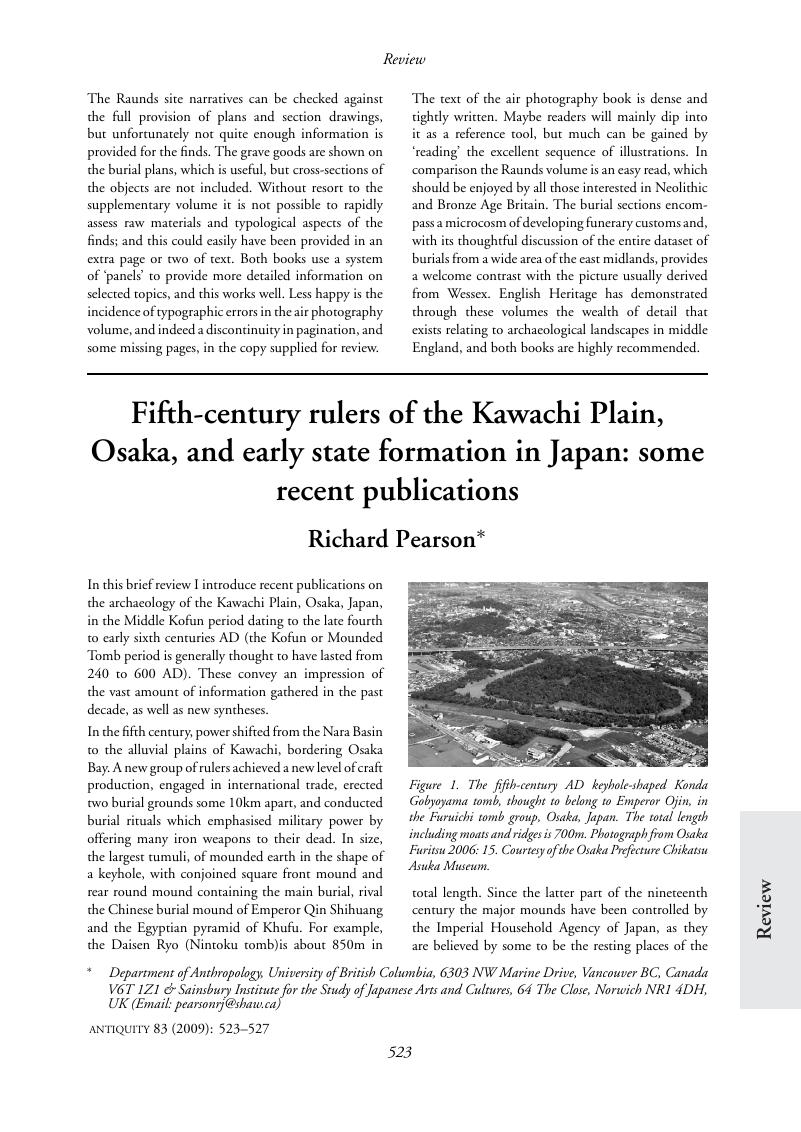Crossref Citations
This article has been cited by the following publications. This list is generated based on data provided by Crossref.
Kaner, Simon
2011.
Complex societies in Japan: archaeology, history and mythology -
J. Edward KidderJr. , Himiko and Japan's elusive chiefdom of Yamatai: archaeology, history, and mythology. xiv+402 pages, 40 illustrations, 16 tables. 2007. Honolulu (HI): University of Hawai'i Press; 978-0-8248-3035-9 hardback $67. -
Koji Mizoguchi. Archaeology, society and identity in modern Japan. xv+186 pages, 33 illustrations, 1 table. 2006. Cambridge: Cambridge University Press; 0-521-84953-5 hardback £45 & $80. -
Gina L. Barnes
State formation in Japan: emergence of a 4th-century ruling elite. xxii+262 pages, 44 illustrations, 16 tables. 2007. Abingdon & New York: Routledge; 978-0-415-31178 hardback £70; 978-0-203-46287-4 ebook..
Antiquity,
Vol. 85,
Issue. 327,
p.
288.
Tsourlos, Panagiotis
Papadopoulos, Nikos
Yi, Myeong-Jong
Kim, Jung-Ho
and
Tsokas, Gregory
2014.
Comparison of measuring strategies for the 3-D electrical resistivity imaging of tumuli.
Journal of Applied Geophysics,
Vol. 101,
Issue. ,
p.
77.





